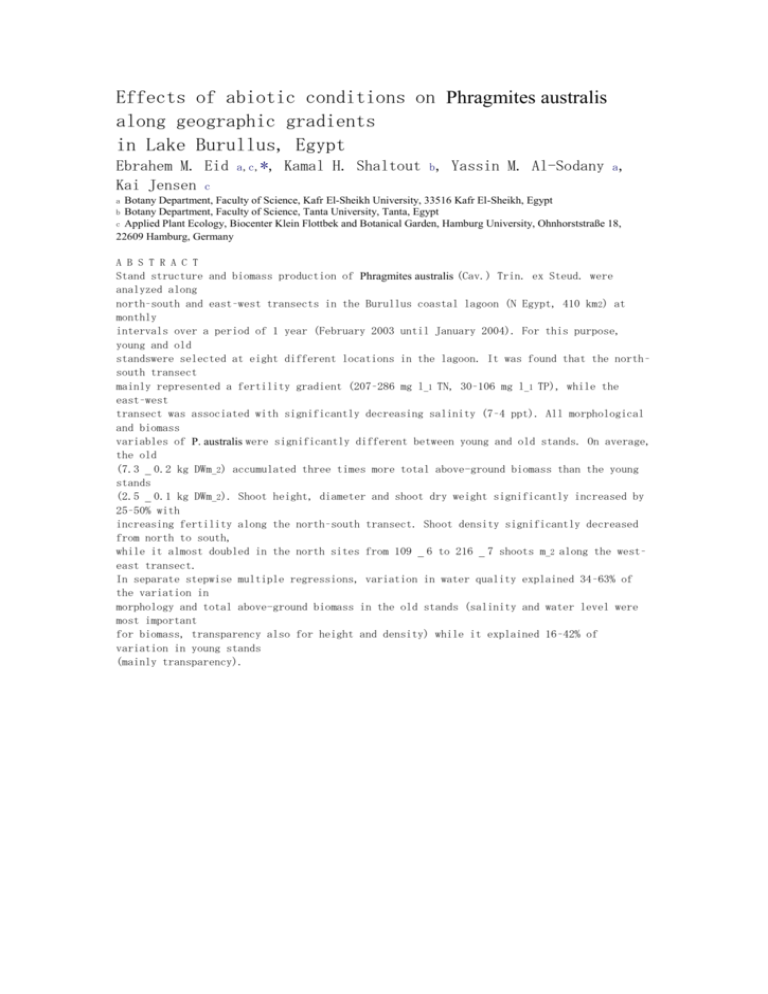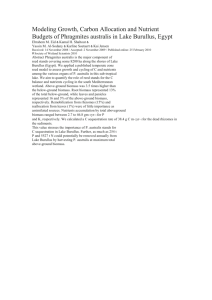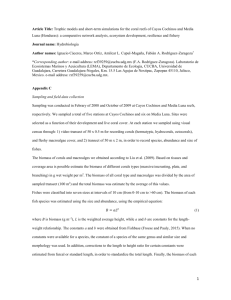Effects of abiotic conditions on Phragmites australis along
advertisement

Effects of abiotic conditions on Phragmites australis along geographic gradients in Lake Burullus, Egypt Ebrahem M. Eid Kai Jensen c a,c,*, Kamal H. Shaltout b, Yassin M. Al-Sodany a, Botany Department, Faculty of Science, Kafr El-Sheikh University, 33516 Kafr El-Sheikh, Egypt Botany Department, Faculty of Science, Tanta University, Tanta, Egypt c Applied Plant Ecology, Biocenter Klein Flottbek and Botanical Garden, Hamburg University, Ohnhorststraße 18, 22609 Hamburg, Germany a b A B S T R A C T Stand structure and biomass production of Phragmites australis (Cav.) Trin. ex Steud. were analyzed along north–south and east–west transects in the Burullus coastal lagoon (N Egypt, 410 km 2) at monthly intervals over a period of 1 year (February 2003 until January 2004). For this purpose, young and old standswere selected at eight different locations in the lagoon. It was found that the north– south transect mainly represented a fertility gradient (207–286 mg l_1 TN, 30–106 mg l_1 TP), while the east–west transect was associated with significantly decreasing salinity (7–4 ppt). All morphological and biomass variables of P. australis were significantly different between young and old stands. On average, the old (7.3 _ 0.2 kg DWm_2) accumulated three times more total above-ground biomass than the young stands (2.5 _ 0.1 kg DWm_2). Shoot height, diameter and shoot dry weight significantly increased by 25–50% with increasing fertility along the north–south transect. Shoot density significantly decreased from north to south, while it almost doubled in the north sites from 109 _ 6 to 216 _ 7 shoots m_2 along the west– east transect. In separate stepwise multiple regressions, variation in water quality explained 34–63% of the variation in morphology and total above-ground biomass in the old stands (salinity and water level were most important for biomass, transparency also for height and density) while it explained 16–42% of variation in young stands (mainly transparency).











